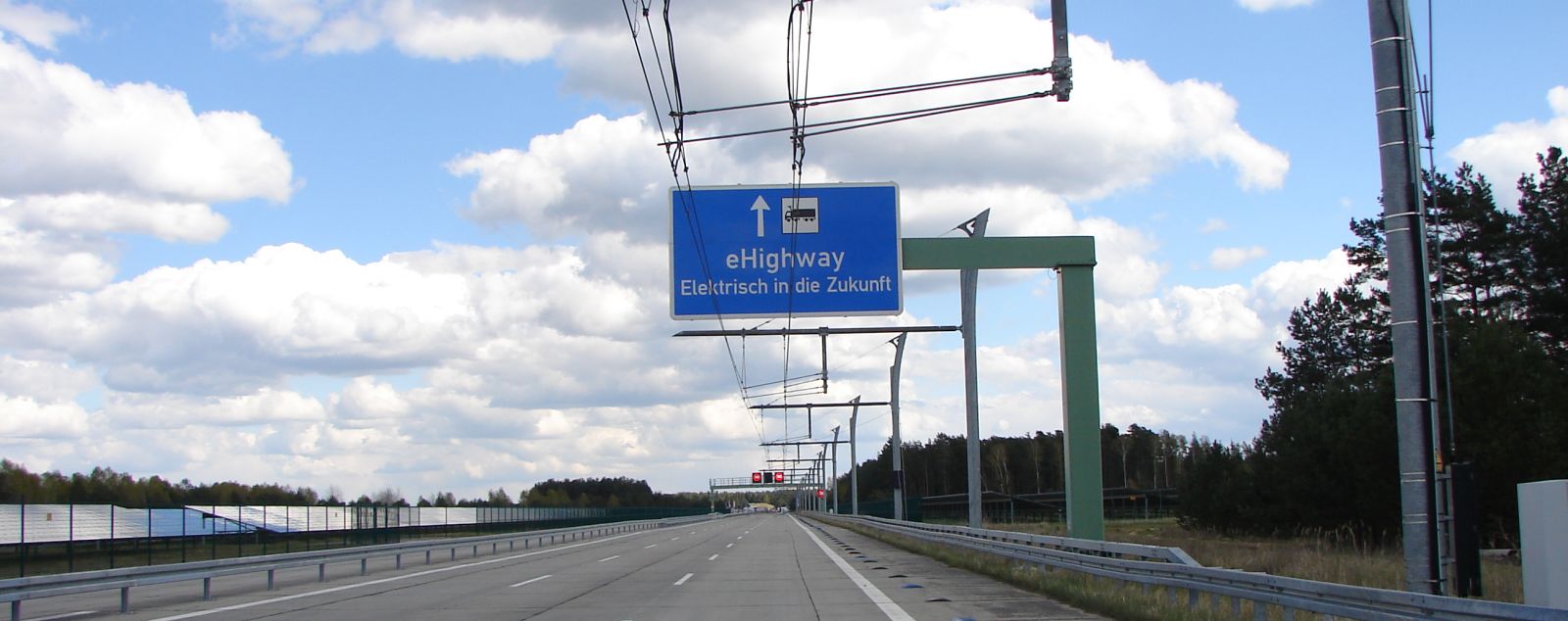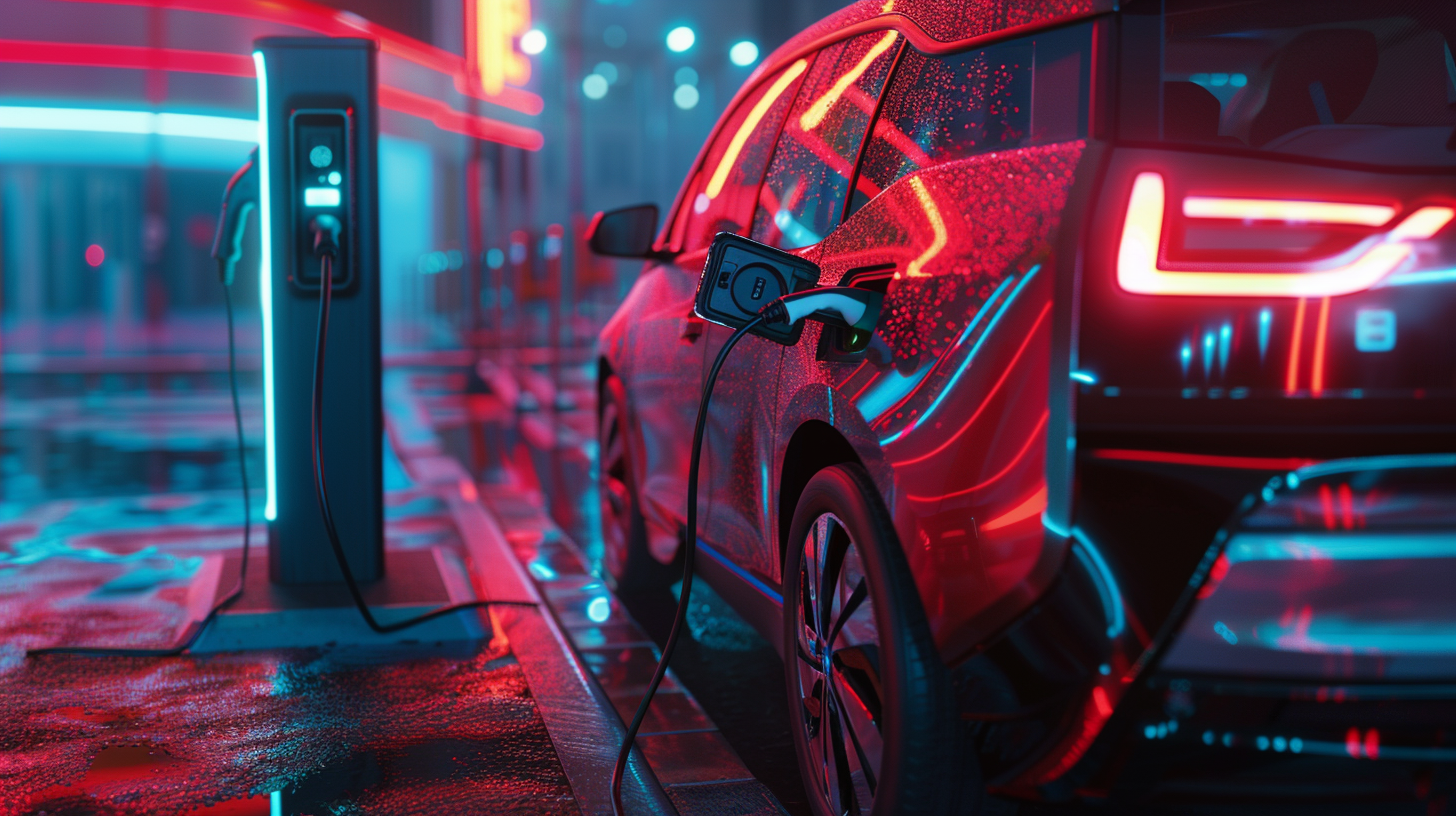
Germany has been conducting trials for a few years now on trucks with what is known as a pantograph mounted on the roof. There are three stretches of highway where the trucks can recharge their batteries via overhead power lines. The idea is crystal clear: Electric driving is the future, also for trucks. If it can be done while driving, so much the better. Because time is money and there is no need to stop at a charging station.
According to the Technical University of Aachen (RWTH Aachen), the project is now entering the next phase. Together with the Japanese truck manufacturer Isuzu, the university has developed the first fully electric truck equipped with a pantograph. The first trips are to be made early next year. This is being done as part of the government-subsidized LiVe project.
Diesel with electric motor
The difference with other trucks that are now driving on the test tracks is that they have an internal combustion engine in addition to an electric motor. Most of those trucks are diesels that have been converted by Siemens, which charges around €10,000 for each conversion.
Achim Kampker, who heads the RWTH faculty of Production Engineering of E-Mobility Components, is enthusiastic. He definitely sees a future for trucks with pantographs. In his opinion, the really heavy trucks in particular are difficult to make electric in the same way as the e-cars that use a charging station. The reason for that is because e-trucks equipped with a power socket need a lot of batteries to be able to run continuously for more than a few 100 kilometers. An overhead line can offer a solution.
The advantage is that overhead cables are also not needed everywhere. Partial routes could in principle be enough to recharge the batteries of an e-truck until they travel the next route with overhead power lines.
Environmental gains
Two more prototypes of the pantograph trucks will be added in 2022, Kampker states. One of them will have an onboard fuel cell that can convert hydrogen into electricity. This provides additional flexibility.

Kampker emphasizes that the transport sector is one of the largest emitters of greenhouse gases, accounting for approximately 20 % of annual emissions. Within the LiVe (Lifecycle Cost Reduction in Electric Distribution Transport) project, other types of electric trucks are also being worked on to see how the most environmental gains can be made at the lowest possible cost.
Wasting taxpayers’ money
Not everyone is as enthusiastic about the idea of highways with long stretches of overhead power lines. The roads are expensive to build as well as expensive to maintain. What’s more, they are not very attractive either.
Earlier this year, Martin Daum, who is in charge of the truck and bus divisions at Daimler (Mercedes), called the “e-Highways” a “dead end and a waste of public funds.” For Daum, the future lies with ordinary electric trucks and trucks that run on hydrogen.
He is certainly not the only one. The costs, more than anything else, are a handicap. For the test tracks built in Germany, the costs are estimated at around €1 million per kilometer.
First overhead power line in 1882
The concept of electric means of transportation with a pantograph is not new. Almost everyone has seen a trolleybus – effectively a tram on wheels without a track. In the Netherlands, they can only be admired in Arnhem nowadays. There are more cities with trolleybuses in other countries, although they are no longer as popular as they were in the middle of the last century. By the way, the first carriages with overhead lines existed in Berlin as early as 1892.
One of the big problems – besides the cost – is that trolleybuses are not very flexible. They usually cannot run without overhead cables, which makes them inflexible.
A relatively new development is an electrical bus with a pantograph on the roof, but also a substantial load of batteries. These e-buses kill two birds with one stone. Transport becomes cleaner and costly overhead power lines are not necessary.
All these buses need is a charger suspended above the roads in only a few places in a city. For the bus driver, it is just a matter of driving their route and, at the end of the line, unfolding the pantograph and charging the batteries. Buses are perfectly suited for this system because they are always stationary at the end of the line regardless. In Berlin, for example, seventeen of these buses are driving around with an overhead charger. Nevertheless, this system seems to be less effective for trucks, which have to travel much further and for longer periods at a time.
What test routes are there?
Germany currently has three sections of road with overhead power lines. The first route (ELISA) was put into service in spring 2019. That was a ten-kilometer stretch along the A5 near Frankfurt am Main. Along with that, there are five kilometers in Schleswig-Holstein along the A1 and a three kilometer section in Baden-Württemberg on the 462 regional road.
As it happens, Germany did not have the premiere. Sweden was sooner. There, a two-kilometer test section with overhead power lines had already been built near Stockholm back in 2016. The reason behind this was also to make freight transport CO2-neutral.
Incidentally, the Swedes are also leading the way with trials of trucks that are being charged via the roads that are equipped with kilometers of copper wire.
Also interesting: Charging cars via the roads? ‘I don’t see a revenue model in this’








